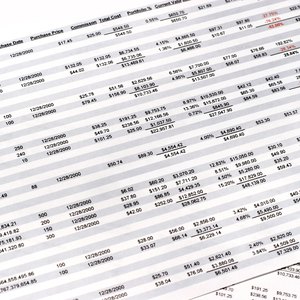
Lenders often sell debts they cannot collect. These companies often gather bad debt in portfolios that they sell for pennies on the dollar. The purchaser of the bad debt then attempts to collect the debt and often settles for an amount that is less than the original amount but more than they paid for it. With effective tools and resources in place, buying a debt portfolio can prove to be a profitable investment.
Tips
After securing financing, you can purchase a debt portfolio using one of several third party brokers available to investors.
First Things First
Arrange for financing from your local bank or through your own reserves. When credit is tight for small businesses, you’ll need to have a solid business plan and credible projections about the profitability of your business. Register with a third party broker through which many debt sellers post their offerings. Companies such as DebtConnection bring buyers and sellers together to broker these deals. You can receive guidance and assistance setting up your business if you’re new to the industry and find pre-screened portfolios to purchase through the consultants. Many creditors post their portfolios online through a range of websites dedicated to the industry.
Do Your Homework
Research the history and quality of a specific portfolio and choose one industry line of debt to start. Rely on your own experience to choose an area from which to launch your business. For example, you may have experience in the automotive industry and believe you might do best collecting delinquent car loans. If you’ve spent time in the banking industry, consumer credit loans or credit card debt might be a more successful fit for your expertise.
Baby Steps For Purchasing
Start small by purchasing a low-volume portfolio. You can start with as little as $1,000 and buy anywhere from $10,000 to $30,000 worth of debt. Use your profits to purchase larger portfolios as you grow. You won't be able to collect from all the debtors; in fact, many debt portfolios provide little, if any profit for debt purchasers. It is a risky business. Approach a company directly. In small claims court on any given day, you’ll meet small-business owners and vendors trying to collect consumer and business debts. Offer to purchase their accounts. Ask the representative to put together a portfolio of all their bad debts and arrange a meeting to discuss the purchase.
Exploring Trade Groups
Join a nonprofit industry trade group such as Receivables Management Association to network with others in the same business. Learn tips and strategies that work for other groups and connect with other business owners for support and partnerships. The RMA requires members to adopt a code of ethics that ensures the industry remains both profitable and respected. Membership could help your business get a foothold in the market.
Other Considerations
You will still have to follow the rules when collecting those debts you’ve purchased. The debt collections industry is governed by the Federal Fair Debt Collections Practices Act and individual state laws, which protect consumers from harassment, physical force and coercion. You cannot use deceptive practices to collect the debt or face legal action by consumers. New federal and state laws restrict creditors from revealing pertinent personal information about their debtors and the industry is on track to get hit with even tighter and more restrictive rules about consumer information and how it’s managed and sold, according to the Receivables Management Association. Prepare to spend nearly as much time finding the debtors as collecting the bad debts.
References
Tips
- Join a nonprofit industry trade group such as the Debt Buyers Association to network with others in the same business. Learn tips and strategies that work for other groups and connect with other business owners for support and partnerships. The DBA requires members to adopt a code of ethics that ensures the industry remains both profitable and respected. Membership could help your business get a foothold in the market.
Warnings
- You will still have to follow the rules when collecting those debts you’ve purchased. The debt collections industry is governed by the Federal Fair Debt Collections Practices Act and individual state laws, which protect consumers from harassment, physical force and coercion. You cannot use deceptive practices to collect the debt or face legal action by consumers.
- New federal and state laws restrict creditors from revealing pertinent personal information about their debtors and the industry is on track to get hit with even tighter and more restrictive rules about consumer information and how it’s managed and sold, according to the Debt Buyers Association. Prepare to spend nearly as much time finding the debtors as collecting the bad debts.
Writer Bio
Linda Ray is an award-winning journalist with more than 20 years reporting experience. She's covered business for newspapers and magazines, including the "Greenville News," "Success Magazine" and "American City Business Journals." Ray holds a journalism degree and teaches writing, career development and an FDIC course called "Money Smart."

